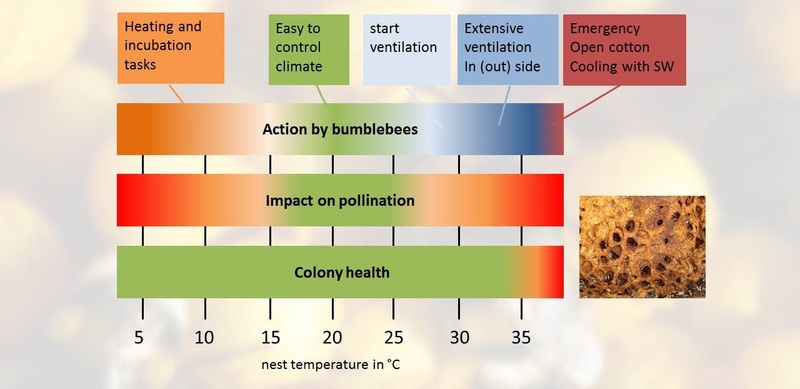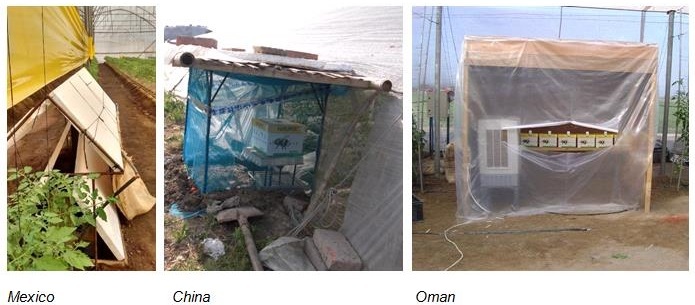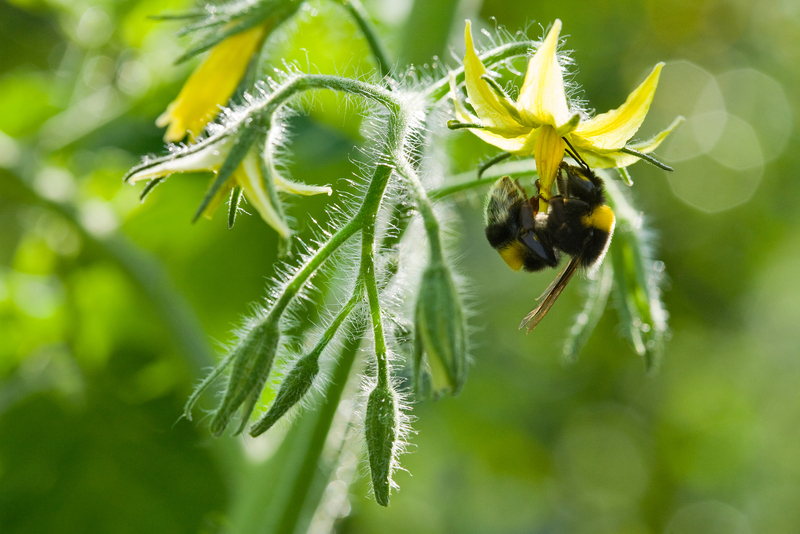‘Growers can get much more out of their Natupol hives by giving them the best conditions in which to operate to ensure optimum productivity. Our bumblebee production facilities around the world and efficient supply chain mean that the bumblebees are ready to carry out their work when they reach their destination. All that growers worldwide need to do is to take account of their local conditions and make sure that the temperature is such that the bumblebees can concentrate on their pollination work and not purely on incubating and ventilating their hives,’ Remco Huvermann concludes.
Koppert’s live webinar series on aspects of pollination and best practices was launched in July this year and offers viewers insights into Koppert’s innovations over the past 26 years; best practices concerning hive micro-climates, bumblebee uses, light conditions for bumblebees in greenhouses, and the application of Natupol hives in seed crops. The final programme in the series in October will be about the very latest Natupol innovations.
Bumblebee behaviour
These strategies are based on the bumblebee’s behaviour: At temperatures below 8ºC, worker bees stay inside the hive for incubating activities in order to heat up the brood. Between 8 and 28ºC, there is little need to occupy themselves with the brood temperature so most workers are free to do their pollination work. At this temperature range, only some of the workers are incubating the brood and closing the protective layer to ensure insulation. Once temperatures pass the 28ºC mark, more and more bees will stay in the hive to ventilate it, reducing their pollination activity. When temperatures exceed 33 ºC, workers go into survival mode, eliminating larva and halting any pollination.
‘You can figure out for yourself that a stable hive temperature means that the optimum amount of workers is free to carry out their pollination work. It also ensures that the bumblebees are out for the maximum number of pollination hours and that it positively influences the lifespan of a colony,’ Remco Huvermann explains.
Impact of hive temperature on the bumblebee colony an pollination:



We all know what it is like to do physical work in the heat of summer and how it impacts on our energy resources. It will therefore come as no surprise that the ever-busy bumblebees need to keep a cool head too to be able to function optimally and carry out their valuable pollination work.
Leading bumblebee hive supplier, Koppert Biological Systems, continually conducts research to ensure that its Natupol hive produces the most effective and productive pollinators. The study of climatic and environmental conditions in which bumblebees need to operate in various countries worldwide conducted over a period of 26 years, has led to a number of innovations that have now been built into the design of the popular Natupol hives. Koppert consultants pay close attention to feedback they receive from growers from as far afield as Canada, Chile, and China and have come up with a number of useful guidelines that will help growers to get the best out of their bumblebees. The best practices advice is aimed mainly at warm to hot climates.
Webinar on best practices advice
‘We go a long way to ensure that growers have the best colonies of pollinators and that they reach their destination in optimal condition and ready to carry out their work. There are, however, local climatic and environmental factors that we have no control over, which is why it is useful to have these best practices guidelines for local conditions,’ says Pollination Manager at Koppert, Remco Huvermann. ‘We recently made this advice available in a webinar that can be viewed here at your convenience.’
The Natupol hive is designed in such a way that the bumblebees are able to influence the microclimate in the hive. The hive itself protects the colony against radiant heart and provides natural ventilation throughout the hive. This allows for fresh air and keeps humidity at the right level. A protective layer in the bottom of the Natupol box acts as insulation and reduces fluctuation in temperature in the hive.
‘The Natupol box ensures the best conditions possible to maintain a constant brood temperature so that the bumblebees do not put unnecessary energy into controlling the hive’s micro-climate. It gives them more time for pollination,’ says Remco Huvermann. ‘The effect of the outside temperature on the hive can be great. A shady location near the ground in amongst the crop can make a difference of 4 degrees in the hive. This can ensure longer pollinations hours and prevent damage to the hive.’
Hive location makes the difference
Koppert’s guidelines advise growers to protect the hive against direct sunlight and to place it in a cool spot. ‘There have been some ingenious local adaptations by some of the more tropical Koppert subsidiaries. In Mexico, consultants have even advised growers to partially burry the hive underground. In extreme heat, even to add drip irrigation to bring down temperatures in the hive. In China, some growers build a temporary extension to their polytunnels to accommodate the hives outside the heat during pollination. In Oman, for example, use is made of air conditioning, and in lower tech cultivations of North Africa a simple, leafy roof covering is enough to bring down temperatures by 5 degrees.’
For extreme ambient temperatures, the best practice is to help the colonies to keep cool during the hottest times of the day and allow them to pollinate in the early morning and evening. As long as the flowers are open and receptive, pollination can take place during these times of the day.